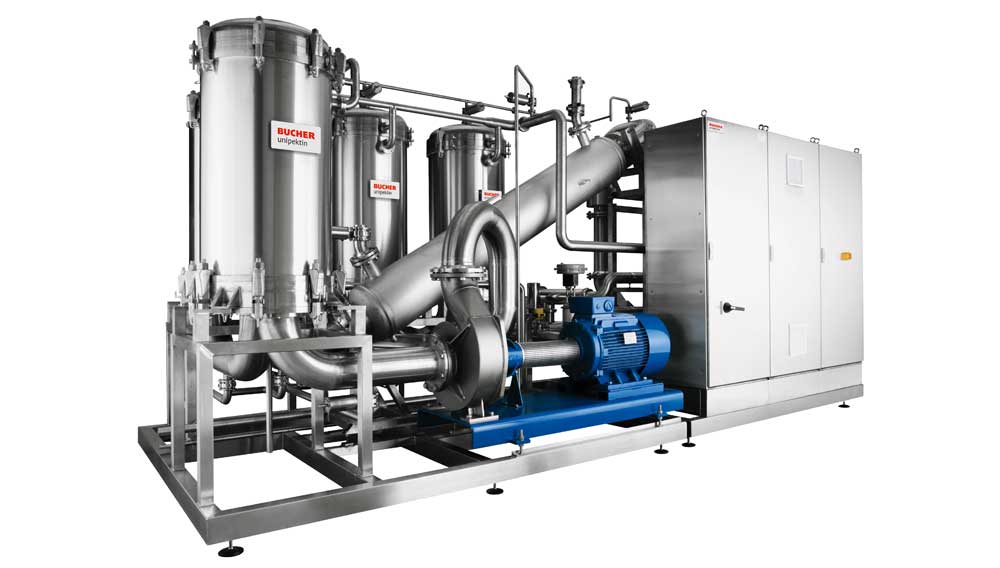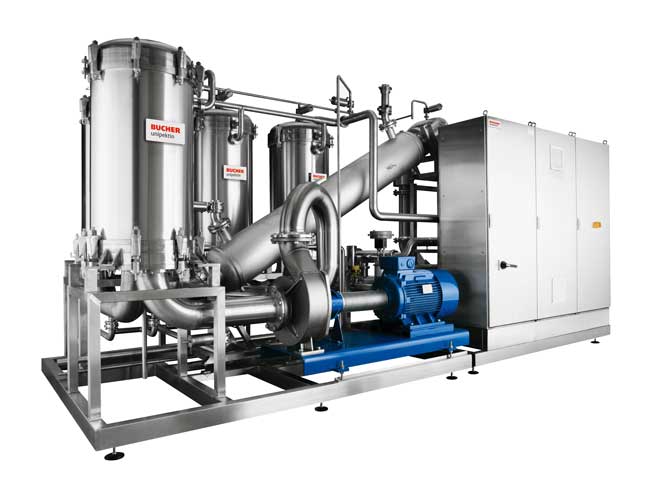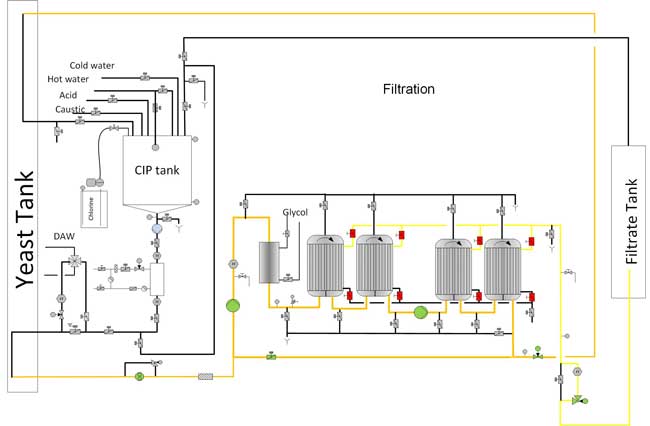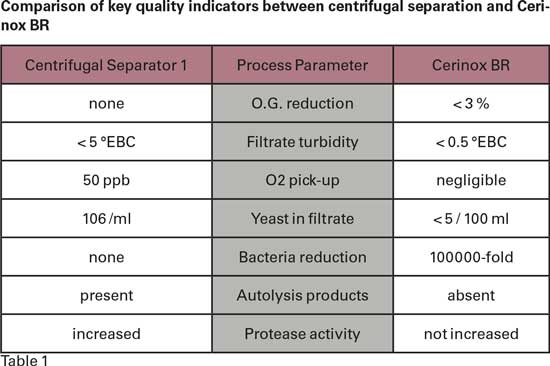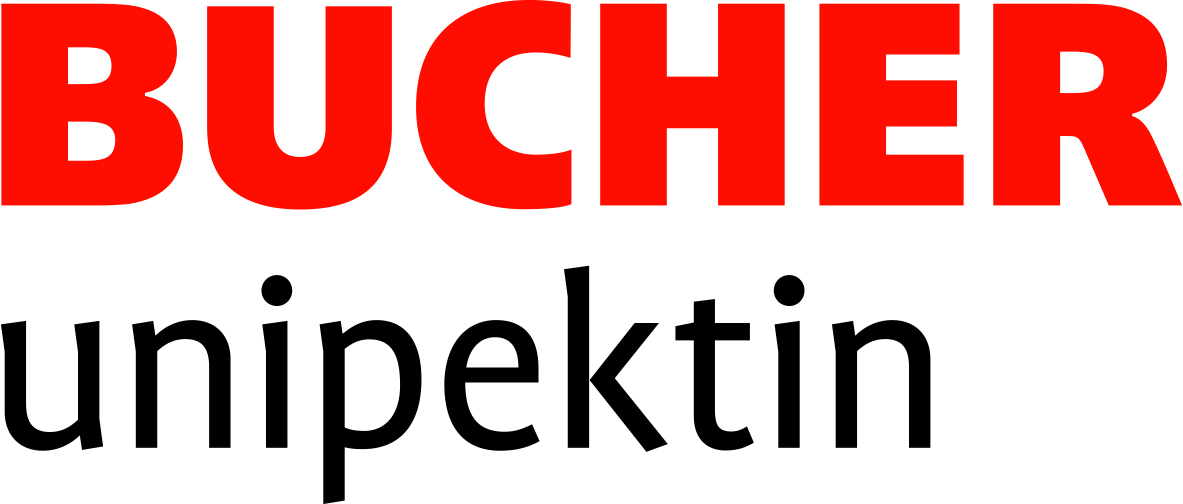Cerinox BR – Beer recovery from surplus yeast
Despite being a well-established technology, beer recovery from surplus yeast is often overlooked by small and medium-sized breweries as something which is only feasible for the big beer factories, having outputs of many millions of hectoliters per year.
However, the modular setup of our Cerinox BR is a solution for all breweries to decrease their beer losses from surplus yeast. Beer recovery by ceramic crossflow filtration is an efficient way to increase the yield of the production process without making any compromises in quality.
Economic benefits
Surplus yeast, which is not reused for pitching, still contains valuable extract which can comprise up to 3 % of annual beer production. By recovering the extract from the surplus yeast, breweries can not only increase their yield, but also save energy and decrease the disposal costs for waste yeast.
A brewery which produces and sells a million hectoliters of beer per year creates a typical volume of around 30000 hl/y of surplus yeast. Around 20000 hl/y high gravity beer (HGB) can be recovered at the original gravity using our crossflow filtration process. By using diafiltration after the preliminary concentration, even more extract can be washed out of the yeast thus reaching a total yield of up to 85 % of recovered extract. This means that up to 25500 hl/y can be recovered, generating an additional annual income of 255000 USD/y (assuming the value of the recovered beer is 10 dollars per hectolitre). As the yeast is concentrated from typically 8-10 % to 20 % (dry-matter basis), there is reduction in waste yeast volume of approximately 20000 hl/y which saves disposal costs. The energy consumption for the recovery process is 4 kWh/hl and is much lower than the energy consumption for making the same hectoliter of beer in the brewhouse; which is around 9 kWh/hl. That means that for the 25500 hl HGB recovered, 127500 kWh electrical energy can be saved compared to producing the beer in brewhouse. This leads not only to a reduction in costs, but also to a reduction in a brewery’s carbon-footprint. Taking all the benefits and costs into account, typical payback times for such an installation can be as low as only one to three years.
Because of the compact design of the skid-mounted Dualflow modules, only a small space and height is required compared to older CMF (crossflow membrane filtration) systems. Due to its modular design, future expansions can be done simply by adding extra modules. The design is maintenance-friendly; the membranes have a long life and are readily accessible without dismantling the modules from the skid.
The robustness of the ceramic membranes means that they can meet the rigorous requirements for cleaning and sanitation typical in breweries. This includes hot water at 85 °C and cleaning recipes including caustic, chlorine and acid steps.
The plant comes with a fully automated control system, requiring only minimal attention from the operating staff.
Process technology
The Cerinox BR process is simple and only requires a few preparation steps to start the filtration. At the start the whole plant is flushed with DAW (de-aerated water) in order to avoid any oxygen pickup. Then the modules containing the ceramic membranes are filled with yeast from the surplus yeast tank. When the plant is filled with yeast the internal circulation starts. During the whole process a part of the yeast in the plant is constantly replenished with fresh yeast from the yeast tank in order to keep the contained volume constant. The yeast is kept at a constant temperature of 10 °C by a cooler in the recirculation pipe. Once a constant recirculation flow is reached, the route to the filtrate tank opens and the filtration starts. Then the beer passes through the membrane to the filtrate side of the module and from there it moves to the filtrate tank area (see fig. 2). As beer is being removed from the yeast the dry matter on the yeast side steadily increases. From the starting dry matter of, for example 8-10 %, the yeast is concentrated to 18-20 % dry matter. Once this concentration is reached, the so-called diafiltration starts, meaning that DAW is added on the yeast side to keep the dry matter at a constant level. DAW is added until a minimum desired original gravity on the filtrate outlet (e.g. 5 °P) is reached. Further dilution would increase the yield but can cause quality loss due to autolysis from the osmotic pressure on the yeast cells. After another concentration step the yeast is pushed out with water back to the surplus yeast tank, from where it can be transferred to the waste yeast tank. The recovered beer can then be dosed from the filtrate tank to mainstream during the green beer transfer or at the filtration step. Typically, up to 10 % of recovered beer can be dosed.
The Cerinox BR comes with its own single-use CIP tank from which the modules and the whole piping system is cleaned in one single CIP operation after production. The standard CIP consists of a caustic clean with a chlorine booster in order to maintain the flux rate of the membranes for many years. This is followed by sterilization with acidified hot water at 80 °C.
Incomparable quality
When compared to other beer recovery technologies like centrifugal separation, no other system can deliver such a comparable quality in the recovered beer. The key differences in main quality parameters are shown in table 1. When a three-glass blind-tasting test was conducted, no differences could be detected between beer with 8 % of recovered beer, compared to product with no recovered beer.
Conclusion
Many breweries are losing extract in their waste yeast as they do not have a beer recovery installed to treat the surplus yeast before its disposal. Our crossflow filtration provides an efficient way to increase the production yield and reduce extract losses in the cold block. With the diafiltration method up to 85 % of the extract being lost to the waste can be recovered. The Cerinox BR is a fully automated and maintenance-friendly solution for beer recovery. Compared to alternative systems, a membrane filtration delivers high quality-beer which can be dosed at rate of 10 % without having a negative impact on the flavour of the final product.
Perfect deal for your business!
After having paid down the investment, BEER RECOVERY plants become a true money machine, turning waste into sellable product.
By sending us the quantity of your surplus yeast (per day, week etc.) we come back with a ROI calculation free of charge.
|
Bucher Unipektin AG Competence Center Filtration |

